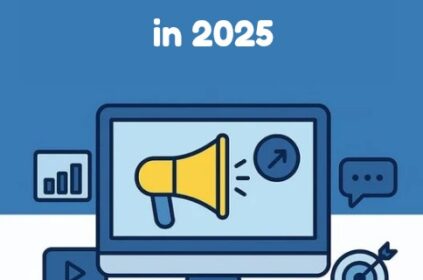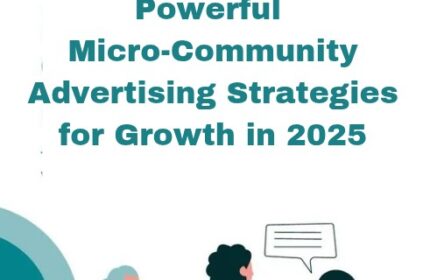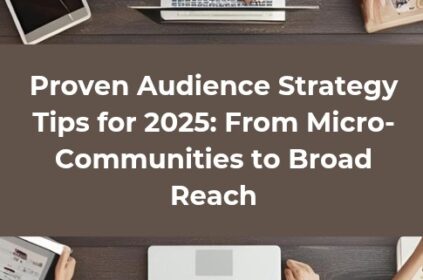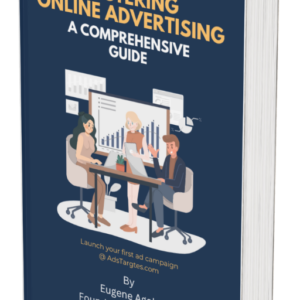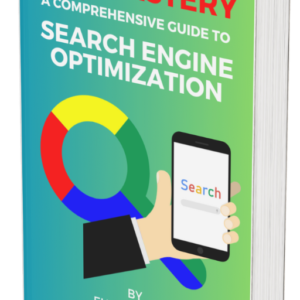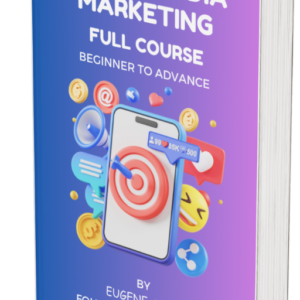Scaling paid media isn’t about simply putting more money behind ads.
In 2025, growth comes from a coordinated approach that connects every major network—TikTok, Instagram, Facebook, YouTube Shorts, Pinterest, and LinkedIn—into one performance engine.
That’s why scaling social ads across platforms has become the central challenge for brands that want sustainable results.
Customers don’t live on one platform anymore, and neither should campaigns. The key is knowing how to unify creative, budget, and measurement so that each channel amplifies the others rather than competing for attention.
Done well, this approach lowers acquisition costs, drives higher conversion rates, and protects your brand from sudden algorithm or policy shifts.
Why Scaling Social Ads Across Platforms Matters in 2025
Scaling social ads across platforms has become one of the most important growth levers for modern brands.
Consumer journeys are fragmented—people discover products on Instagram, research them on YouTube, and buy through TikTok Shop or Facebook Marketplace.
A single-channel strategy no longer matches how customers actually behave. Global social media users reached over 5 billion in 2024, with average daily use surpassing 2.5 hours.
This growth confirms that running ads across multiple platforms is now a baseline requirement for any competitive marketing plan.
But scaling social ads across platforms is not just about spreading budget thinly across networks. It requires a unified approach to creative, targeting, and measurement.
Each platform has its unique algorithm, ad format, and audience behavior.
TikTok rewards vertical short-form videos, LinkedIn thrives on professional storytelling, and Meta offers granular targeting and retargeting capabilities.
Without a clear framework, campaigns risk becoming disjointed, expensive, and under-optimized.
The core advantage of scaling social ads across platforms is diversity. With algorithmic volatility—like Instagram adjusting its Reels priority or TikTok’s potential regulatory constraints—brands that diversify are less exposed to risk.
It also drives incremental conversions: Meta’s internal studies show campaigns running across multiple properties see a 12% lift in brand outcomes compared to single-platform efforts.
For 2025, marketers who align creative assets, conversion tracking, and performance goals across the ecosystem are the ones most likely to capture compound results.
Building a Unified Multi-Platform Ad Strategy
The first step in scaling social ads across platforms is building a strategy that avoids fragmentation.
Many marketers still treat TikTok, Instagram, Facebook, Pinterest, and LinkedIn as separate silos. That approach often duplicates work, inflates costs, and creates inconsistent messaging.
A unified strategy begins with a central campaign framework. Define a single objective—such as lead generation or eCommerce conversions—and then map how each platform contributes to that funnel.
This alignment extends to creatives. While each platform favors different formats, core themes should remain consistent.
If a brand is running a sustainability campaign, the key messaging pillars should hold across Reels, TikTok clips, and YouTube Shorts, with adjustments in tone and visual style to fit the native environment.
Creative iteration should be modular: cutdowns of the same master video into multiple platform-specific versions.
This reduces production costs and accelerates scaling social ads across platforms.
Audience management is another core area. Platforms like Meta offer advanced segmentation, while TikTok provides interest-driven discovery.
Syncing these segments with a customer data platform (CDP) or CRM ensures that audiences are not being hit with the same ad repeatedly across different placements.
Unified frequency capping and coordinated retargeting protect efficiency.
Data integration also fuels accurate reporting, making it easier to compare performance metrics like ROAS, CTR, and CPA across networks.
Without it, scaling social ads across platforms becomes guesswork.
Optimizing Creative Assets for Each Platform
Creative is often the bottleneck when scaling social ads across platforms. Each network has its cultural norms and algorithmic biases.
TikTok rewards authentic, lo-fi videos shot in vertical formats. Instagram demands polished visuals and on-trend Reels.
LinkedIn favors professional narratives with thought leadership. YouTube Shorts requires engaging hooks within the first three seconds.
To succeed, marketers need to create platform-ready content without ballooning production timelines or budgets.
One proven solution is modular content production. Start with a core long-form shoot that captures multiple scenes, angles, and product highlights.
From that single session, extract 10–15 micro-assets that can be reassembled into TikTok clips, Instagram Stories, or LinkedIn carousels. This method allows consistency while still respecting platform-specific expectations.
Tools like CapCut and Canva accelerate resizing, captioning, and localization. When teams adopt this system, scaling social ads across platforms becomes less resource-intensive.
Performance data should inform ongoing creative optimization. TikTok’s Creator Marketplace and Meta Ads Manager provide granular metrics on engagement, retention, and conversion.
By analyzing which creative variants perform best, teams can double down on winning formats and retire underperformers quickly.
Brands that iterate aggressively are better positioned for 2025, where consumer attention spans are shrinking, and algorithm preferences change monthly.
Ultimately, creative agility is the difference between campaigns that scale profitably and those that stagnate.
Allocating Budget Across Multiple Platforms
Budget allocation is one of the toughest challenges in scaling social ads across platforms.
Too often, teams divide spend evenly or lean too heavily on one platform, ignoring performance data. Instead, allocation should be dynamic and performance-driven.
The starting point is historical data: which channels have delivered the highest ROAS in the past?
Pair this with real-time testing: small budget experiments on emerging platforms like Pinterest Idea Ads or TikTok Spark Ads can reveal untapped opportunities.
Research shows global digital ad spend will reach $740 billion in 2025, with social channels accounting for nearly 30%.
Within that, TikTok continues to gain share, while Meta remains dominant in retargeting. Smart allocation means not chasing trends blindly but balancing risk.
A portfolio approach—where 50% of spend goes to proven performers, 30% to growing platforms, and 20% to experimental channels—creates resilience.
This mix ensures that scaling social ads across platforms generates both stable returns and innovative insights.
Automated budget rules within ad managers can further optimize spend.
Setting conditions like pausing campaigns if CPA exceeds benchmarks or redistributing funds toward ads with CTR above average keeps budgets aligned with outcomes.
For 2025, marketers must pair automation with human oversight.
Scaling social ads across platforms is not a set-and-forget exercise; it requires continuous tuning to maximize efficiency while minimizing waste.
Tracking Metrics That Actually Matter
Many advertisers still judge performance by vanity metrics like impressions and likes. While these show visibility, they rarely translate into revenue.
Scaling social ads across platforms requires focusing on metrics that map directly to the customer journey.
At the awareness stage, impressions and video completion rates matter. At consideration, CTR and engagement rates become relevant.
At conversion, CPA and ROAS dominate. Beyond purchase, lifetime value (LTV) and repeat conversion rates determine long-term profitability.
A unified reporting dashboard is critical.
Third-party tools like HubSpot Marketing Hub or Sprout Social can pull campaign data across TikTok, Meta, YouTube, and LinkedIn into a single view.
This visibility allows side-by-side comparisons and prevents misinterpretation of isolated results.
Without it, scaling social ads across platforms becomes difficult to justify to finance teams, as fragmented numbers obscure the true ROI.
Qualitative insights also matter. Comment sentiment, share rates, and save rates reflect whether content resonates enough to drive organic amplification.
Over time, these signals reduce acquisition costs by feeding retargeting pools.
Marketers who balance quantitative KPIs with qualitative context avoid the trap of chasing clicks without building loyalty.
This balanced measurement is the backbone of scaling social ads across platforms in 2025.
Leveraging Automation and AI Tools
Automation is transforming how brands manage campaigns.
Scaling social ads across platforms without automation is nearly impossible, given the sheer volume of placements, targeting options, and creative variants.
Platforms now offer built-in automation, such as Meta’s Advantage+ campaigns, TikTok’s Smart Performance Campaigns, and Google’s Performance Max.
These systems use machine learning to adjust bids, placements, and creative delivery in real time.
However, reliance on automation should not mean loss of control. Marketers must set clear boundaries—such as maximum CPA thresholds, brand safety filters, and excluded placements.
AI-driven creative testing tools like Phrasee or Persado help identify which ad copy variations resonate most, while AI-powered analytics forecast future performance scenarios.
When combined with human oversight, these tools make scaling social ads across platforms far more efficient.
The rise of generative AI also supports creative scaling.
Brands can produce multiple text, image, and video variations rapidly, ensuring a steady flow of fresh content to combat ad fatigue.
But ethical considerations, authenticity, and regulatory compliance must remain top of mind.
Scaling social ads across platforms in 2025 will reward those who balance speed and efficiency with brand integrity.
Avoiding Common Mistakes in Cross-Platform Campaigns
Despite best intentions, many campaigns fail when scaling social ads across platforms due to common pitfalls.
One frequent mistake is running identical creative across every network without considering native formats. What works on LinkedIn rarely performs on TikTok.
Another mistake is overexposure: targeting the same audience across multiple platforms without frequency caps leads to ad fatigue and wasted spend.
Measurement errors also derail strategies. Teams often fail to account for all costs—such as creative production, influencer fees, and platform boosts—making ROAS look inflated.
Ignoring attribution windows can further distort data, as some platforms credit conversions long after the initial click.
To prevent this, marketers should use blended attribution models and monitor incrementality tests.
Scaling social ads across platforms is only effective if measurement accurately reflects performance.
Compliance oversights are another risk. Regulatory bodies like the FTC now enforce stricter rules on disclosures, influencer partnerships, and data use.
Failing to comply can lead to fines and reputational damage. Successful cross-platform advertisers in 2025 are those who prioritize transparency, customer trust, and precise data management.
Case Example: Scaling Ads for a DTC Brand
Consider a direct-to-consumer skincare brand aiming to launch a new product in early 2025.
Their approach to scaling social ads across platforms began with a unified message: “clean beauty that works.”
Creative assets included tutorial-style TikToks, aspirational Instagram Reels, and in-depth YouTube Shorts explaining ingredients.
LinkedIn ads targeted B2B buyers for wholesale opportunities, while Facebook targeted repeat purchasers with bundles.
The budget was allocated using a 50-30-20 model: 50% to proven channels (Meta and TikTok), 30% to growth channels (Pinterest and YouTube Shorts), and 20% to experimental formats.
Performance was tracked through Shopify-integrated attribution models, combining discount codes with post-purchase surveys.
Within 60 days, the campaign drove a 4.8x ROAS across all platforms, with TikTok leading top-of-funnel awareness and Meta driving the highest conversion volume.
This illustrates how scaling social ads across platforms can create a compounding effect when creative, budget, and measurement align.
Preparing for Emerging Trends in 2025
The future of scaling social ads across platforms will be shaped by emerging trends. Cookie deprecation means reliance on server-side APIs and in-app conversions will grow.
Social commerce integrations, such as TikTok Shop, Instagram Checkout, and Pinterest Shopping, are collapsing the funnel, allowing direct purchases within apps.
Brands that integrate these features gain higher conversion rates and richer first-party data.
At the same time, AI-driven ad optimization will continue accelerating. eMarketer forecasts that over 70% of global advertisers will rely on AI for bid management, audience segmentation, and creative personalization by 2025.
Consumer expectations for personalization are also rising, making relevance non-negotiable.
Scaling social ads across platforms in this environment means mastering both the art of storytelling and the science of automation.
Finally, regulatory environments are tightening. Data privacy laws in Europe and emerging regulations in the U.S. demand stricter consent management.
Advertisers must prepare by building robust first-party data strategies and transparent disclosure practices.
Those who adapt quickly will gain a competitive edge, as scaling social ads across platforms increasingly depends on both compliance and creativity.
Conclusion
Scaling social ads across platforms is no longer optional—it is the backbone of sustainable growth in 2025.
Brands that unify strategy, adapt creative to native environments, allocate budgets dynamically, and measure outcomes with precision will outperform peers.
The integration of automation, AI, and social commerce further amplifies results when combined with disciplined oversight.
While challenges like compliance, ad fatigue, and rising costs remain, a strategic, data-driven approach unlocks compound returns.
In a fragmented consumer landscape, scaling social ads across platforms is the clearest path to capturing attention, driving conversions, and building long-term loyalty.



